Heineken Open Design Explorations: Design a Club
by: Core77, 2011-07-29 20:00:00 UTC

Calling all (former) club kids and party people. Heineken launched their first Open Design Exploration with a brief to graphic, motion, fashion, product and interior designers to design the club of the future. The process will be a collaborative conversation between the 20 chosen finalists and the final experience, a fully outfitted and functional club space will be unveiled in Milan during the Salone in April 2012. Dont miss this unique opportunity to see your ideas and concepts become a reality. The deadline for entry is August 14th. See full details here (through facebook) and check out their concept video after the jump. We'll see you on the dancefloor in April!
(more...)


 frame moooi award 2012
frame moooi award 2012
by: Designboom - Weblog, 2011-07-29 16:45:00 UTC

FRAME magazine and dutch furniture company moooi are joining forces to host the frame moooi award 2012,
french designer philippe starck is this year's juror.
read more
matt gray: corian bench bike rack
by: Designboom - Weblog, 2011-07-29 11:10:00 UTC
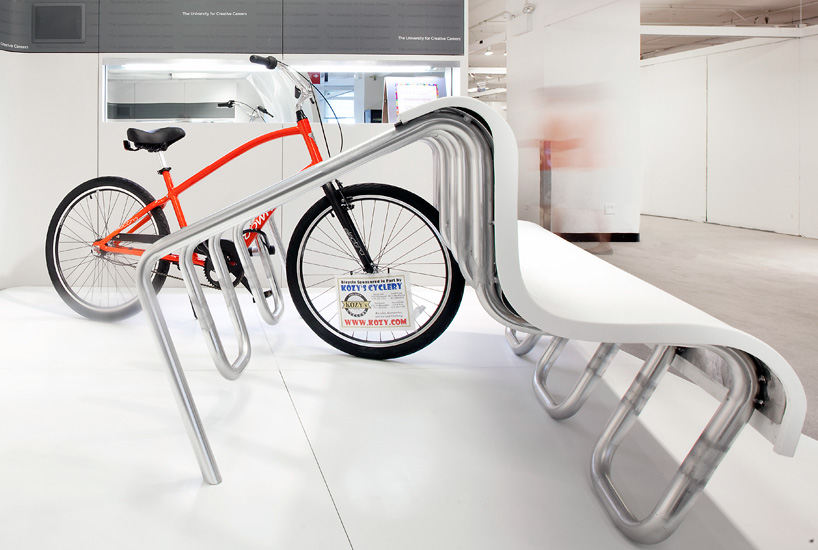
the bike rack and bench seating hybrid is composed of corian®, the result of a collaboration between savannah college of art and design and c.h. briggs building products distributors.
read more
SLIDES solar house for egypt
by: Designboom - Weblog, 2011-07-28 14:46:00 UTC
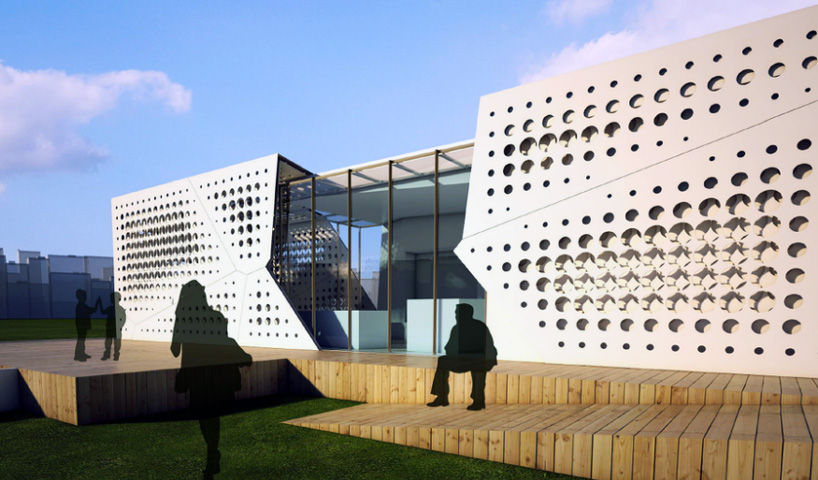
the solar-powered house concept addresses local sustainability challenges while offering a contemporary interpretation of traditional egyptian and arabic architecture and design.
read more
Cycle Your Way To Power
by: Yanko Design, 2011-07-29 14:16:52 UTC
OneBike is quite an innovation I tell you! It’s an electric bike that gets powered by kinetic energy. Basically when you set it on its cradle at home, the bike becomes a stationary fitness machine. So every time you pedal to keep fit, it harnesses energy from your motion and converts it to electric power. Tank up the juice and cruise the roads my friends! Awesome!
Designers: Byoung-soo Choi & Jun-kyeong Kim
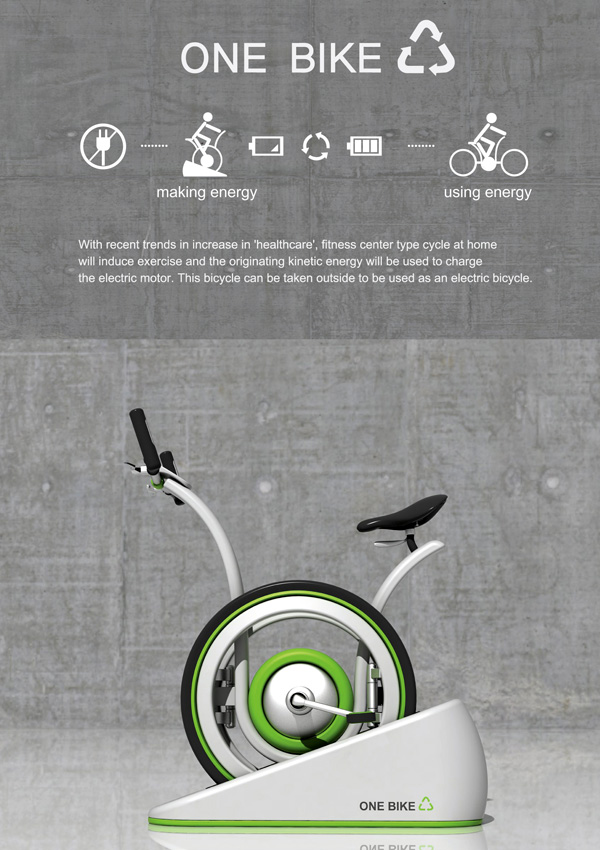
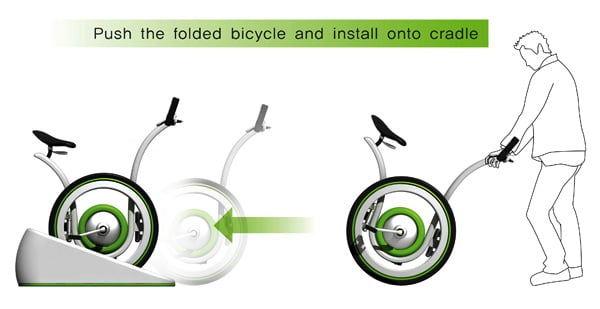
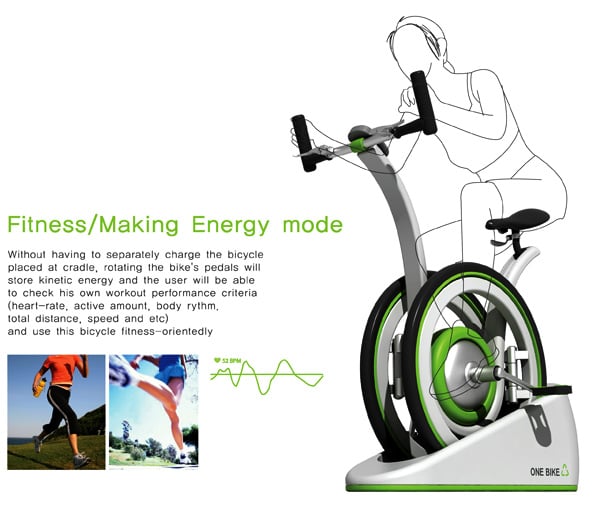
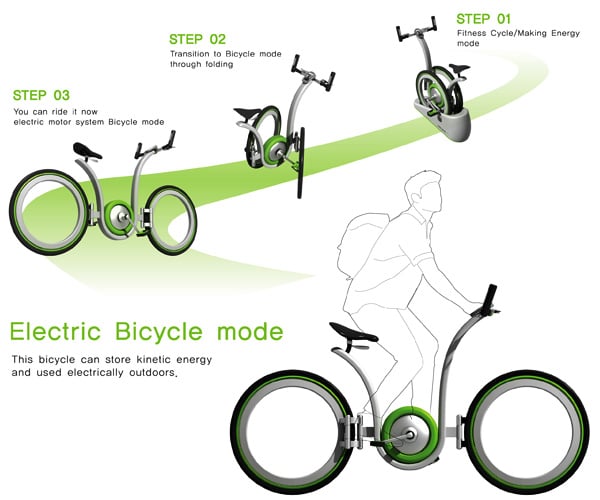
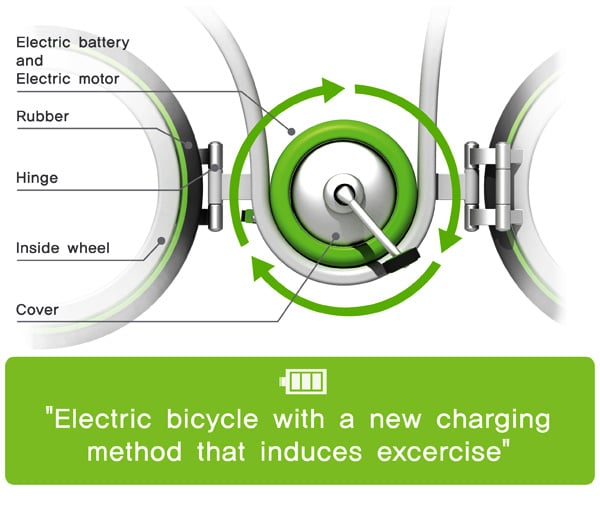
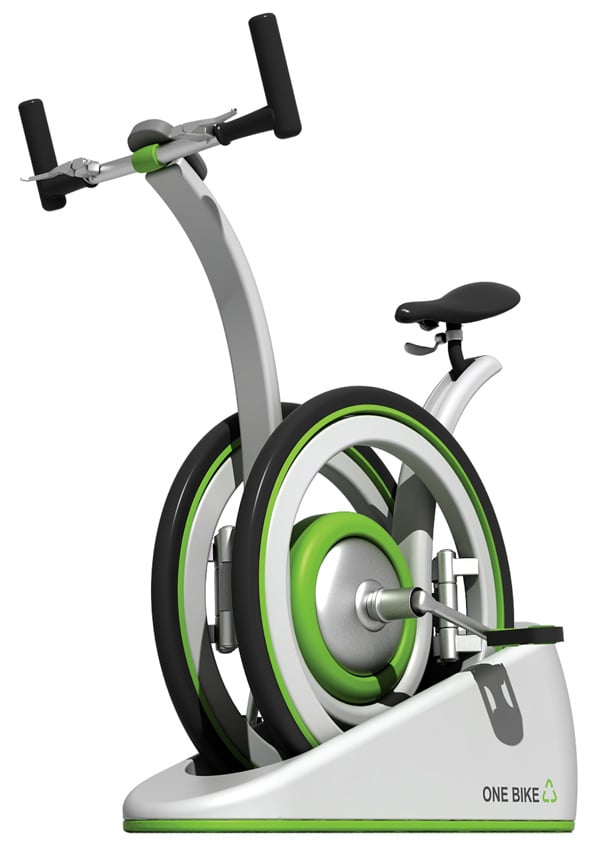
----------
Yanko Design
Timeless Designs - Explore wonderful concepts from around the world!
Yanko Design Store - We are about more than just concepts. See what's hot at the YD Store!
10 extraordinary eco friendly energy generation alternatives
by: Ecofriend, 2011-07-30 06:14:43 UTC
Babita Sajnani:

energy generating systemUnconventional energy generating system
It is amazing to see how creative people can get with finding and discovering new concepts and ways to produce energy. Some methods are absolutely mind-boggling and force you to ponder at the practicality of such a solution. Some options might lead to some energy generation – albeit too minor to be even considered – hence, insignificant. Nevertheless, it would be worthwhile to think over such options and appreciate the creative thought process of the inventor.
1. Japanese railway stations to harness energy from passenger movements

Ticket counterTicket counter which generates energy
East Japan Railway Company is researching and trying to develop eco-friendly railway stations that would be powered by human movement – an innovative idea. Hence the passengers would themselves be responsible for transporting them across – with their very own energy. This concept is based on ‘piezo’ technology as some ‘piezo’ components would be placed under the floor of the ticket gates that would generate energy from the movement of passengers walking over it. A prototype of this energy-producing device is presently under trial in Shibuya, and if all turns out well, then we would have self-sufficient railway stations in the near future.
2. Cow Poop: Methane-based green electricity in California

Cow poop electrictyCow poop to generate electricity
We all are aware of cow waste that is used for producing manure for farming and biogas. However, David Abers envisions biogas to be the major power source for providing electricity to a hundred households on a daily basis. His dream project – the Vintage Dairy Biogas Project –comprises a lake equal to the area of five football fields with a depth of 33 feet, filled with liquid cattle waste. However, the process of producing methane is quite different and supposedly more efficient as the liquid waste is then transferred into a covered pit which separates the solid material from the liquid. This enables the hydrogen sulfide and CO2 to be separated from the liquid excreta residue to produce pure methane gas.
3. Energy produced by bouncing breasts

Bouncing breast energyBouncing breast energy to generate electricity
We do understand that energy is produced by anything that is in motion – it could be through machines or maybe through human motion – but breasts producing energy is a little bit out of context. This is precisely what Adrienne So from San Francisco claims as she believes that women having big breasts can generate energy from the bouncing motion. This energy can be tapped through special bras that have elastic material with nanowire fabric that would help in generating energy. This does seem like a far-fetched option of producing energy.
4. Sonea Energy Absorbing System captures noise and turns it into energy

Sonea Energy systemSonea system which generates energy
Industrial designers Jihoon Kim, Boyeon Kim, Myung-Suk Kim and Da-Woon Chun have discovered an innovative method of converting noise to generate a renewable energy alternative by devising an energy-absorbing device that utilizes all the noise in our surroundings to convert it into energy. This device called the “Sonea” has the capacity of generating approximately 30-watts of clean energy out of one decibel of sound.
5. Generating energy through a rocking chair

Energy-generating chairChair which generate Energy
This way of harnessing energy is a rather relaxing way – as we tend to use our rocking chair quite often. Designed by Petr Novak, this chair can help you generate energy as you habitually sit on the rocking chair for your regular reading sessions. The energy harnessed can then be stored in batteries or can also help you read by lighting up your book through the LED lamp that is powered from under the seat.
6. Soccket: An energy-generating soccer ball

Energy Generating Soccer BallEnergy Generation from Soccer Ball
Many developing countries use kerosene-fueled lamps to lighten up their nights – which is actually harmful because of its dangerous fumes that result in the production of 190 million MT of carbon dioxide each year. Four Harvard engineering students have tried to find a solution for this by designing the ‘Soccket‘ which is a soccer ball that generates energy when kicked. It produces energy throughout daytime in order to provide light after sunset. This is a great way to keep fit by playing soccer and also to produce electricity.
7. Generating footstep energy through a special flooring system

Energy from footfallsCapturing energy from footfalls
The Design School in Loughborough has devised a unique flooring system that is capable of generating electricity from footsteps. This design by Pavegen Systems has even won an award in the ‘Big Idea’ category at a prestigious UK business award ceremony honoring ethical businesses. In this concept, the floor is cleverly designed to transform the kinetic energy of footsteps into electricity – a highly sustainable source of renewable energy.
8. Nanogenerator-equipped devices for harnessing running motion

Energy generating systemRenewable energy generating system can be attached to shoes to generate renewable energy
If you’re an avid runner, then your running shoes can turn into devices for generating energy and converting your kinetic motion into electricity. This idea has been conceptualized by Lola Mensa who has invented a device which when placed in your running shoes would harness the energy of your movement in batteries. This device called the ‘Cargador De Celular‘ is comprised of nanogenerators that would help in producing electricity that would be stored in the batteries of the device. After your run, you can remove the device and use the energy for powering your laptop or mobile phone.
9. Fluxxlab harnesses energy from revolving doors to produce green electricity

Revolving doorRevolving door which generate electricity
The energy generated from revolving doors can also be a potential energy source as discovered by the designers and Fluxxlan studio in New York – who believe that many buildings across the US having revolving doors can now tap this hidden source. Called the ‘Revolution Door’, this would have a turbine that would capture the kinetic energy and then transport it to an installation site.
10. Solar lingerie

Energy-generating braBra which generates energy
This bizarre concept by the Japanese has lingerie producing energy. The corset-like bra actually has solar panels fitted in to it that is capable of powering a display board. Seems like this would only work for skimpily dressed models, or for beach babes, otherwise it seems pretty impractical.


 Future Perfect: Driverless electric taxis for clean and safe highways
Future Perfect: Driverless electric taxis for clean and safe highways
by: Ecofriend, 2011-07-30 06:20:04 UTC
Rajeev Kumar:

ATNMBLThe all-wheel drive car, known as ATNMBL, will generate power from roof-mounted solar panels
What’s happening right now:
As the cities of the world are rapidly transforming into congested spaces, the future of the world would significantly depend on how they deal with issues of congestion and provide a sustainable living experience to the people. According to a World Bank study, the urban population is expanding at more than six percent in most of the rapidly developing countries. It is expected that megacities of the world would more than double within a generation. The urban planners are, thus investing into the concepts that would enable them to deal with the twin problem. Driverless electric taxis, or the personal rapid transit system (PRT), are seen by many as a possible solution to problems discussed here.
Trends:
1) OPTI Concept:

OPTI ConceptDesigner Paul Piliste has conceptualized the OPTI, an ecofriendly driverless taxi for London, which could hit the street with sheer style and smartness in the year 2025.
The OPTI concept has been developed by designer Paul Piliste as an eco-friendly driverless taxi for the city of London. The lithium-ion batteries will enable it to travel for 50 miles when fully recharged and, moreover, it can be recharged wirelessly. It will be equipped with satellite navigation system, parking sensors and proximity lasers. The users will have to hire this taxi from various hiring points in the city. Then they can select their destination on a touch screen and the taxi will automatically navigate them to that place. It is expected to be launched in London by 2025.
2) AXI Robot Taxi:

AXI Robot TaxiAXI Robot Taxi designed by Kubik Peter has two seats and a small luggage space.
The AXI Robot taxi has been designed by Kubik Peter. It will run on battery-powered electric motors attached to the rear wheels of the taxi. Built from lightweight materials, this robot taxi can run for upto 20 miles on a single recharge at the speed of upto 90 miles per hour. It has been primarily designed for congested urban spaces. Two persons with minimum luggage can enjoy a ride on this evironment friendly driverless taxi.
3) Heathrow Taxi pod

Heathrow Taxi podThe idea is you’d swipe an access card, be greeted by name, and then be silently whisked away to your destination — or close to it, at least.
The four-seater Heathrow Taxi pod has been designed by Professor Martin Lowson as the first PRT of the world. It is currently used at the Heathrow airport for taking passengers from Terminal 5 to the parking lot of the airport. This bubble-shaped vehicle runs on battery and can reach the speed of upto 25 miles per hour. Passengers have to select their destination on a touch screen inside the pods while the sensors buried under the surface of road direct it towards the destination.
4) ATNMBL

ATNMBLThe all-wheel drive car, known as ATNMBL, will generate power from roof-mounted solar panels
The ATNMBL has been designed as autonomous taxis which passengers can hire through phone calls. This taxi features modular-seating that includes a couch, side chair and a table for giving the passengers a feel of their living room. The electric motors of this vehicle will be powered by solar-panels mounted the roof.
The Concept:
The driverless, compact and eco-friendly taxis are expected to be a defining feature of the congested roads in 21st century. These taxis will run within within the pedestrian zones and will be equipped with modern technologies for accident-free navigation. They will be controlled from a common station and can be availed by the passengers through phone calls.
The proposed advantages include:
1. Increase in the capacity of existing roads.
2. Allowing passengers to use their travel time for other fruitful purposes, without worrying for driving and navigating chores.
3. Lesser road accidents
4. Better management of traffic flow
5. Providing an environmentally friendly alternative to existing transport systems.
6. Decrease in the number of personal vehicles and control over rising fuel prices.
The impact:
The driverless electric taxis can change the way we commute. Countries like Germany, UAE and UK have begun experimenting this futuristic, eco-friendly system in small measures. However, the real impact could be judged only after testing in a real congested city. Also, it may not be a completely ‘green’ alternative as the developers would have to worry about the sources for recharging batteries and meeting demands of a megacity.


 What's next: Electric assist bicycles for a green future
What's next: Electric assist bicycles for a green future
by: Ecofriend, 2011-07-30 09:57:27 UTC
Balakrishnan Ramachandran:

Electric assist bicycleElectric assist bicycles for a green future
As we know it
The electric bicycle or e-bike, as the name suggests, is a bicycle fitted with an electric motor. What differentiates it from a motorcycle is that it has a a dual drive mode, you can pedal it like a conventional ( non-electric bike) or use the electric motor. The usual method of use is for the rider to pedal and use the motor to help when the pedal effort becomes high, for example uphill. The usage of e-bikes around the world have shown rapid increase since 1998. In China where bicycles have always been popular, there are estimates of 120 million e-bikes as of early 2010. The Electric Bikes Worldwide Reports - 2010 Update forecasts a market of one million e-bikes in Europe and 300,000 in USA.
Need for change
Most early electric bicycles were made up of electric motors retro-fitted to the conventional pedal operated bike. They retained the chain and sprocket drive for the pedal. When the motor was started, the pedal tended to be locked or free moving, thus completely eliminating pedal effort. The batteries used were lead-acid and the recharging was by friction drive from the rear wheel. The recharging was not very effective and the batteries needed frequent replacement. With the uptick in e-bike usage, many new designs have been attempted, which are not retrofits but new, purpose-designed vehicles. These e-bikes are functional, aesthetic, and are likely to attract a larger customer segment.
Some of these exciting new e-bikes are reviewed below.
1.HMK 561 by designer Ralf Kittman

HMK 561HMK 561 by designer Ralf Kittmann
What’s new
The HMK 561 concept bike won the Industrial Design award iF in 2010 and is strictly not a bicycle but an ultralight motorbike. There are no pedals at all. Two electric motors located in the swing arms, drive the rims of the front and rear wheels. The frame is made of carbon fiber material that is an electric conductor. No wires are needed for the electric connections. The carbon fiber frame is said to act as a capacitor that stores the mechanical energy from the bike movement as electric charge to drive the motors.
What difference will it make
The bike is attractively designed and the use of carbon fiber for the frame will reduce weight. The use of dual rim drives will provide greater traction, whereas the elimination of the pedal and sprocket-chain mechanism sidelines many of the mechanical snags of conventional bicycles.
Problems
No battery appears to have been built into the bike and the source of motive power is not clear. While regenerating energy from mechanical movements and braking can help recharge batteries, it seems difficult to provide enough energy for the ride itself.
2. Grasshopper Bike concept

Grasshopper BikeGrasshopper Bike Concept by David Gonçalves
What’s new
The Grasshopper e-bike is foldable into a trolley which makes it very attractive for bikers. It is also convenient for people to take into their apartments after use for riding. The light weight frame is made of composite materials for rigidity and strength. The bike has electric motor in addition to pedals. The motor is powered by rechargeable batteries. The batteries recharge when the bike is pedaled and in braking or riding downhill. Interestingly, the bike can be parked on a stand to convert it into an exercise bike and the batteries can be charged during the exercise to serve as the power source for the commute.
What difference will it make
The foldable design will make this e-bike acceptable for people for mixed commuting needs. As the bike completely folds itself into a compacter identity, this concept will find acceptance even from older people or people with disability.
Problems
There seem to be no significant problems and the concept bike appears to have addressed many of the issues with e-bikes.
3. EBIQ Electric Bike concept

EBIQ Electric BikeEBIQ Electric Bike concept by Yuji Fujimura
What’s new
Yuji Fujimora’s EBIQ concept e-bike is different from the other concept bikes. It uses a box-like design for the frame in place of the usual diamond design. The bike uses solid wheels.The unusual feature of this design is that the pedals, the handles, the seat and other projecting parts of the bike can all be folded into the box frame which reduces the parking space needed. The rear wheel of the bike is driven by a motor that is powered by a rechargeable Lithium Ion battery. The battery recharges from pedal power and from regenerative braking. There is an electronic display panel over the handles that can connect to a laptop or smart phone, and displays map or weather information for the rider. The bike also has power outlets to recharge mobile phones, MP3 players and other electronic devices.
What difference will it make
The bike design is attractive and the closed box design should make cleaning and maintenance easier than an open frame. The foldable pedals and handles are a good innovation that could also prevent damage to these in parked locations. The display that connects to a computer or mobile phone would add to bike’s functionality.
Problems
There seems to be no significant problems with this design concept.
4. Concept Electric Bicycle by Chris Swoszowski

Concept Electric bicycleConcept Electric bicycle by Chris Swoszowski
What’s new
This stylish concept bike by designer Chris Swoszowski is designed specifically for New York city commuting in 2012. The details are sketchy, but the bike does not have pedals and is driven entirely by an electric motor powered by Lithium Ion batteries. Air intake ports and an exhaust are provided to cool the motor. The frame is made of carbon fiber. The bike also has LED lamps and tail lights.
What difference will it make
Attractive form design will add to the acceptance of e-bikes for commuting. This bike’s shape takes its inspiration from Lotus Evora.
Problems
It is unclear how the Lithium Ion battery for the bike will get recharged in the absence of pedals.
5. Peugeot’s electric assist Racing bike Concept

Peugeot Racing e-bikePeugeot’s electric assist Racing bike Concept
What’s new
Peugeot’s concept e-bike model was featured at a display stall at the 2009 Automobile exhibition and attracted attention since it signaled Peugeot’s interest in the e-bike market. Peugeot has already become the first mainstream automobile manufacturer to make an electric scooter in 1996 and has introduced the E-Vivacity - the 4kW light scooter in 2010 which is powered by Lithium Ion Cobalt batteries.
The model on display had few details except that the bike has two cranks, one for the pedal and the other for the motor suggesting that it is electric assist rather than a motor-bike.
What difference will it make
The entry of a mainstream automobile manufacturer into the e-bikes arena will provide the industry a brand boost that will encourage acceptance of e-bikes as an alternative personal transportation vehicle.
Problems
Having sold only 3500 units in 10 years, Peugeot has not marketed its electric scooters very aggressively. The greater awareness of ecological issues now compared to 10 years ago could result in increased demand pull, but it would still need the marketing push.


 Flat screen TV energy consumption dips by more than half since 2006
Flat screen TV energy consumption dips by more than half since 2006
by: Ecofriend, 2011-07-30 12:07:59 UTC
Balakrishnan Ramachandran:

Flatscreen TVEnergy consumption reduced by 60 percent
The television is perhaps the most common home appliance and has become the central piece of the home entertainment system with satellite TV receivers, DVDs, gaming consoles and even computers connected to it. The earlier CRT display TVs were power intensive, but limited in size. The advent of flat screen plasma TVs and much larger screens led to increased power needs. Globally, it is estimated that TV sets account for 6-8 percent of all energy consumed in the home. In the US, energy consumption from home TV sets is even higher at 12 percent.The arrival of new display technologies appears to have made a big difference to power consumption in the home TV.
Basing it on a data compiled on 1800 models of TV sets, Sust-it, the UK energy efficiency site, reports that energy usage in flat screen TV sets has shown an impressive 60 percent decline since 2006. Ross Llamas, the founder of Sust-it, says this improvement is from the use of LEDs to backlight the TV. LCD panel TVs have largely replaced Plasma displays that look to be on the verge of being phased out. The Sust-it study is confirmed by the magazine Which?. The editor, Martin Hocking says that his own studies show a 40-inch flat screen TV, that consumed 300 watts 3 years ago, now consumes only 70 watts. Since 2009, LED TVs have taken a 20 percent share of the 9.5 million UK flat TV market. As LED TVs consume less power than LCDs, the change to LEDs is good for reduced power consumption.
Mandatory energy labeling of TV sets are set to be introduced in the UK from December this year.This should drive TV buyers to opt for the more energy efficient sets. This trend was seen in other energy labeled products also, like air conditioners and refrigerators. The reduced power usage in flat screen TVs is the only good news in an otherwise worrisome scenario. Consumer electronics has already displaced lighting and refrigeration as the major home energy users. The sale of TV sets per home is set to go to 2.6 from an already high 2.4.
Via: Guardian


 Helios eco friendly trailer runs solely on solar power
Helios eco friendly trailer runs solely on solar power
by: Ecofriend, 2011-07-30 12:11:04 UTC
Shoib:

Helios Eco TrailerPowered by solar energy
King Kong Production Vehicles, a US based company that makes trailers used in the entertainment industry, has come up with an eco friendly trailer named Helios. Helios is different from millions of other trailers used by the entertainment industry because it is powered by solar energy. The company claims that Helios does not affect environment much because it runs solely energy produced from renewable sources.
Picture Gallery
Helios eco-trailer from King Kong Production Vehicles
In order to make the trailer eco friendly, King Kong Production Vehicles has used solar panels with the cabinet made of bamboo. The glass desks which are used in the trailer, are made of recycled content, glass desks. The floor of the trailer is made of recycled rubber, while the generator is powered by bio-diesel.
The company recently tested Helios and found that it functioned for 14 hours using the solar energy. You can hope that Helios will find many takers in the coming days as it will not only save the environment but it will prove to be very economical.
Via: Jetsongreen




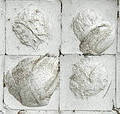

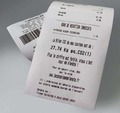



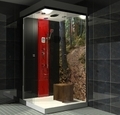
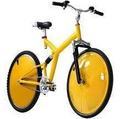
Comments by our Users
Be the first to write a comment for this item.